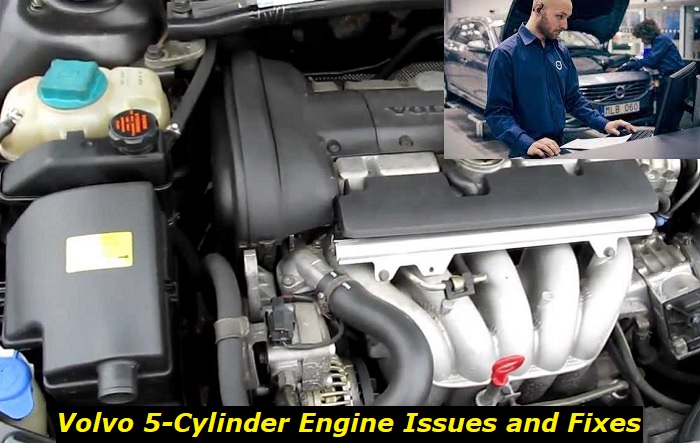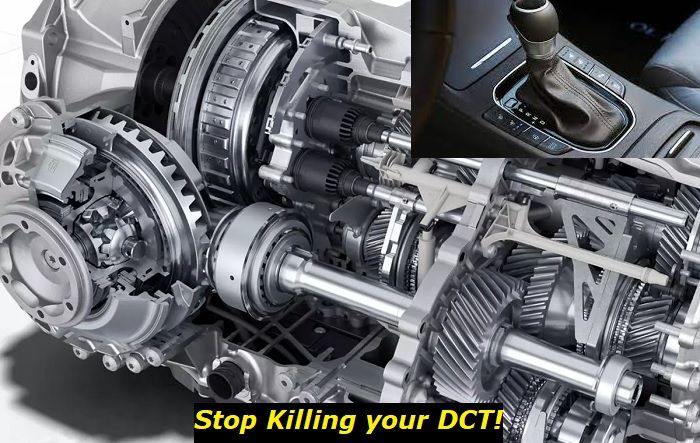The Volvo 5-cylinder engine, amid its unorthodox design, holds quite a reputation in the automotive industry. In fact, a well-maintained unit can last over two decades. Likewise, it comes with 350 hp, which makes it more than capable of holding its own against newer performance-focused engines.
To ensure the longevity and optimal operation of the engine though, there are common issues that you should keep a look out for. Should it start to show signs of problems, they should be addressed without further delay.

Most Common Causes of Problems in the Volvo 5-Cylinder Engine and Their Solutions
With that said, here are the most common complaints associated with the engine along with the most likely solutions for each:
1. Worn Timing Belt
The timing belt of the Volvo 5-cylinder engine must be replaced every 80,000 miles. So, if you happen to have crossed that mileage without replacing the belt or you just bought a used Volvo with that range, chances are, it's already worn.
Signs of a worn timing belt are loud engine noises, noticeable slippage in the belt, and oil leaking from the timing cover. To diagnose the problem further, you need to conduct a visual check-up on the belt for any signs of cracking or fraying. If it looks worn but hasn't snapped yet, then you can use a tension gauge tester to measure how much wear has occurred over time.
The most common causes of a worn timing belt in Volvo 5-cylinder engines are age-related deterioration and improper maintenance leading to lack of lubrication causing friction between two moving parts. Over time, this will cause the metal teeth on the belt to become brittle and break off easily.
The best solution is to replace the belt as soon as possible since failure to do so can result in severe engine damage. Make sure to get a genuine Volvo timing belt of the right size and strength for your model.
Be sure to double-check that everything is properly fitted and adjusted before starting the engine again. As always, if you don't feel confident enough to tackle this job yourself, it would be best to entrust it to a professional mechanic who will replace the parts according to manufacturer specifications.
2. Oil Leaks
The importance of proper lubrication in the Volvo 5-cylinder engine cannot be overstated. Without it, the engine could suffer severe damage that could lead to multiple costly repairs or even necessitate a full engine replacement. Oil leaks in these engines can have several causes, ranging from minor issues such as cracked gaskets or loose oil filters to more serious ones like worn cylinder wall clearances or badly designed cylinder heads.
Diagnosing an oil leak requires careful observation and testing with specialized tools. The most common symptoms of a leak include a burning oil smell, visible stains on the ground, and increased smoke from the exhaust pipe.
A visual inspection should also be conducted to identify potential sources of the leak like damaged hoses, clamps, gaskets, and oil pan seals. To further narrow down the issue, a pressure test should be done on the engine cylinder head and intake manifold using an oil pressure gauge or a leak-down tester.
Once the source of the problem is identified, it can usually be resolved by replacing damaged parts like gaskets or hoses. If the major components such as cylinder heads or crankshaft seals are to blame, they will require more intensive labor and likely need to be replaced entirely.
However, if all other areas of the engine have been properly lubricated and maintained throughout its lifespan, most sources of oil leakage can be addressed fairly easily with minimal expense.
It is important to note that oil leaks should not be taken lightly, as they can result in serious damage to the engine if allowed to persist. Therefore, drivers and mechanics alike need to take proper precautions when identifying and resolving these issues in the Volvo 5-cylinder engine. Taking care of potential causes early will help ensure a longer life for the vehicle by preventing further damage from occurring and avoiding more expensive repairs down the road.
In addition, regular maintenance of the engine's lubrication system is recommended to prevent any minor issues from becoming major ones. Properly cleaning, filtering, and replacing oil regularly are all necessary steps towards maintaining healthy performance and a long lifespan for Volvo's 5-cylinder engine.
The consequences of oil leakage can be serious and expensive if not addressed quickly, so it is essential for drivers to monitor their engine's lubrication system closely and take immediate action when a leak is detected. Proper diagnosis and repair using the right parts are necessary to ensure that the issue is resolved correctly and completely. In the end, taking these steps will help maximize the life of your Volvo 5-cylinder engine.
3. Hard Shifting and Longer Shift Times
There have been a significant number of complaints about the transmission paired with the Volvo 5-cylinder engine, too. The common among them includes hard shifting and longer shift times in between gears.
This can be a major cause of concern due to the expenses associated with major repairs or replacements involving the major components of the transmission system. The good news, however, is that most of these issues can be traced to the electrical parts of the transmission, which are somewhat more affordable to fix.
The diagnosis of the problem can be done in several ways. First, you may observe some symptoms such as increased noise when changing gears or a delay in acceleration after shifting. Second, a visual inspection using special tools may be able to detect any external damage or leaks that could be causing the issue.
Finally, test runs with an electronic scan tool and diagnostic software can provide more accurate information about the transmission's condition.
In most instances, fixing these issues is as simple as replacing faulty parts such as sensors and solenoids in the transmission system. A professional mechanic should be able to quickly identify which components need to be replaced by simply looking at their performance data gathered from electronic scan tools. This should save time and money compared to having to replace the entire transmission system.
It is also important to note that not all components in the transmission system need to be replaced. Depending on the severity of the problem, some parts may only require cleaning or simple maintenance procedures, such as changing fluids and filters.
Moreover, it is recommended to use high-quality OEM replacements since they are engineered to work better with a specific model. Taking these steps can help ensure smoother shifts and longer lifespans for your Volvo 5-cylinder engine's transmission system.
If a major repair or replacement is necessary, then it is best to leave it up to a professional technician. They will have the specialized tools and expertise needed to diagnose and resolve any issues quickly and correctly. With proper diagnosis, maintenance, and repairs, the transmission on your Volvo 5-cylinder engine should remain in top condition for many years to come.
4. Premature Wear of the Strut Mounts
When it comes to the drivetrain, the most common issue found in Volvo cars that use the 5-cylinder engine is premature wear of their strut mounts. Strut mounts are vital parts of a car's suspension system, connecting the strut to the body of the vehicle.
Without them, the strut would be unsupported and unable to do its job of providing stability for cornering or braking. The strut mounts ensure that the proper amount of load is transmitted from the engine to the strut itself.
When it comes to diagnosing problems with Volvo's strut mounts, there are several symptom indicators that you should especially pay attention to like knocking sounds when going over bumps in the road, a decrease in handling ability, poor braking performance, clunking noise when shifting gears, and uneven tire wear patterns.
Visual inspection can also determine whether excessive play has developed between mounting points as well as worn rubber bushings. A test drive will help to identify any issues with the suspension system, and using a specialized tool can help diagnose whether there is an issue with the strut mount itself.
The solution to this problem often requires replacing some or all of the components involved in the strut mounts. If only one side of the vehicle is affected, then replacing only that side may be sufficient.
When it comes to replacement parts, Volvo offers special kits for its 5-cylinder engine vehicles which include new struts and mounting points as well as other related components such as bushings and nuts and bolts. It can be difficult to determine exactly which parts are necessary without consulting a professional mechanic, however, once the correct parts have been procured, installation should not take more than a few hours.
The premature wear of strut mounts in Volvo cars with 5-cylinder engines can lead to handling and braking issues. It is important to diagnose the problem using symptoms, visual checks, and tests before replacing any parts.
Once the correct replacement components have been determined, installation should be straightforward for an experienced mechanic. However, if a professional opinion is needed for this repair job then it would be wise to consult a certified technician who has experience working on Volvo vehicles.
Conclusion
The Volvo 5-cylinder engine may have a good reputation in the market. However, that does not mean that it's trouble-free. Therefore, you must take some effort to keep it in good running condition at all times by watching for early signs of problems and getting them fixed as soon as possible.
About the authors
The CarAraC research team is composed of seasoned auto mechanics and automotive industry professionals, including individuals with advanced degrees and certifications in their field. Our team members boast prestigious credentials, reflecting their extensive knowledge and skills. These qualifications include: IMI: Institute of the Motor Industry, ASE-Certified Master Automobile Technicians; Coventry University, Graduate of MA in Automotive Journalism; Politecnico di Torino, Italy, MS Automotive Engineering; Ss. Cyril and Methodius University in Skopje, Mechanical University in Skopje; TOC Automotive College; DHA Suffa University, Department of Mechanical Engineering






Add comment